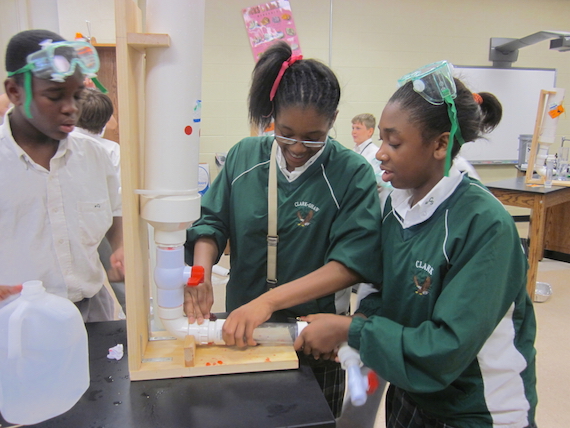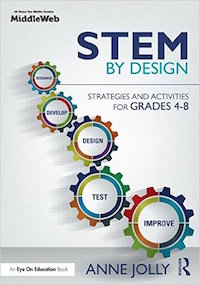Time for a Quick Midyear STEM Checkup

You might want to pause and do a quick midyear STEM checkup. As you step back and look at your classroom program, look for successes and for opportunities to improve certain aspects. I have a few ideas (nothing surprising there). If you have some ideas, successes, or fix-ups, I hope you’ll grab a moment and share them here.
As you read my five STEM progress indicators, take a moment to jot down some specific examples of your own success and perhaps some improvements you want to try in the months ahead.
1. Indicators of STEM lesson progress
Let’s start with a glance at the STEM lessons you taught. What did those lessons, taken collectively, accomplish for your students? Are your students improving in their abilities to do the core STEM tasks I’ve listed here?
2. Indicators of STEM teamwork progress
Next consider students’ progress in working as productive team members. You can find some teamwork self-assessments in my Teamwork Tips handout (pp 8-10). These self-assessment tools are “work in progress” but I don’t mind sharing where I am so far – you can download the PDF here.
In addition, one day soon ask teams to take a moment to brainstorm together and answer questions such as these: What behaviors did we do well today? What behaviors do we need to improve? Other progress indicators include:
3. Indicators of student attitude and confidence development
A primary goal of STEM lessons includes developing specific attitudes that will help kids to be more successful students, citizens and members of the workforce. Think about how your students react during and following their STEM lessons. Do you see any of these things taking place? Remember to jot down examples for the ones you notice.
4. Indicators of student skill development
Today’s fast-moving culture demands citizens and workers who understand how to tackle emerging problems as well as longstanding issues. STEM projects help to build these skills. During the first half of the year have you seen evidence that your students are growing in their abilities to do these things?
Probably one of the biggest and best indicators that STEM lessons are having an impact on students is an increase in student enjoyment and interest in their learning. They no longer feel disconnected from the real world when studying science and math. Positive responses to at least some of the indicators listed, plus an increase in student engagement and understanding of subject matter, are a real testament to your teaching.
5. Indicators of strong STEM instruction
Take a moment to think about how teaching and learning takes place within your STEM lessons. Hopefully you are enjoying teaching STEM more and more, and you’re beginning to better understand how to integrate math and science through an engineering challenge. You understand the multiple roles of technology, and use current digital technology if available, as well as having your students create problem-solving devices (technologies).

If you were not familiar with PBL, you may have abandoned some old familiar practices as you taught STEM lessons and dived into new open-ended strategies to encourage student interaction, innovation, invention, and creativity. If so, that can’t have been comfortable. Thank you for doing that. If you’re still working out the kinks, let’s talk!
A STEM-happy New Year!
As you look back on your year so far, focus on strengthening the areas in which you and your students are already successful. Their continued success will encourage them, create positive attitudes, and prepare them to take on areas where change and/or improvement is needed.
I’m looking forward to our new year together! If there are STEM areas you want to know about, I hope you’ll jot your questions in the comments here. I promise to respond.
And don’t forget to include ideas, successes, or fix-ups on STEM lessons if you have some to share. With an even greater focus on STEM learning (and funding) in the just-passed Every Student Succeeds Act (ESSA), we all need to pitch in and help each other out!







































